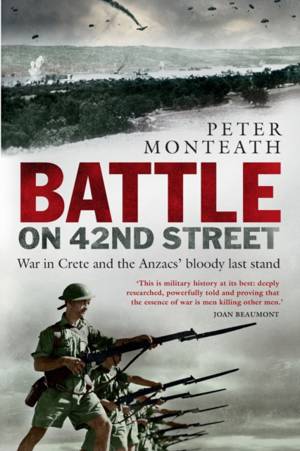
- Afhalen na 1 uur in een winkel met voorraad
- Gratis thuislevering in België vanaf € 30
- Ruim aanbod met 7 miljoen producten
- Afhalen na 1 uur in een winkel met voorraad
- Gratis thuislevering in België vanaf € 30
- Ruim aanbod met 7 miljoen producten
Zoeken
Battle on 42nd Street
War in Crete and the Anzacs' Bloody Last Stand
Peter Monteath
Paperback | Engels
€ 44,95
+ 89 punten
Omschrijving
At what point does the will to survive on the battlefield give way to bloodlust? The Battle of Crete was one of the most spectacular military campaigns of the twentieth century. For the first time in history, German forces carried out an invasion entirely from the air while poorly equipped Anzac and British forces, and local Cretans, defended the island. During the campaign, one battle stands out for its viciousness. When the Germans approached the Allies' defensive line--known as 42nd Street--on 27 May 1941, men from the Australian 2/7 and 2/8 Battalions, New Zealanders from several battalions, and British soldiers counter-attacked with fixed bayonets. By the end, bodies were strewn across the battlefield. Later, a German doctor reported that many of the bodies of the German soldiers had been mutilated. Acclaimed historian Peter Monteath draws on records and recollections of Australian, New Zealand, British, and German forces and local Cretans to reveal the truth behind one of the most gruesome battles of the Second World War.
Specificaties
Betrokkenen
- Auteur(s):
- Uitgeverij:
Inhoud
- Aantal bladzijden:
- 272
- Taal:
- Engels
Eigenschappen
- Productcode (EAN):
- 9781742236032
- Verschijningsdatum:
- 1/02/2020
- Uitvoering:
- Paperback
- Formaat:
- Trade paperback (VS)
- Afmetingen:
- 152 mm x 231 mm
- Gewicht:
- 408 g

Alleen bij Standaard Boekhandel
+ 89 punten op je klantenkaart van Standaard Boekhandel
Beoordelingen
We publiceren alleen reviews die voldoen aan de voorwaarden voor reviews. Bekijk onze voorwaarden voor reviews.








